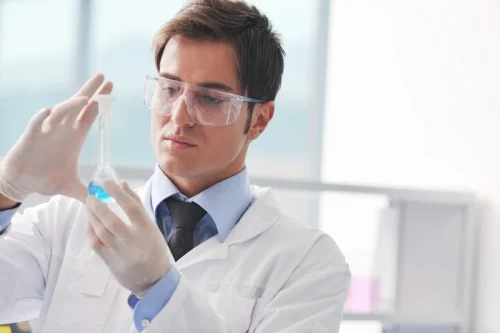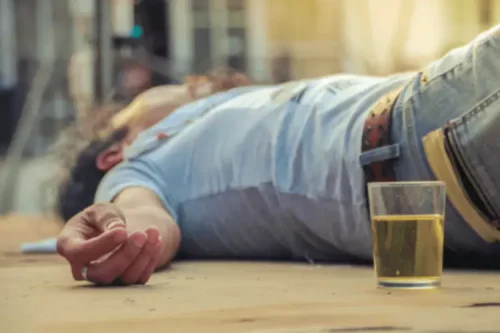
But this is a goal you should also approach safely, and you don’t have to do it alone. Other risk factors include previous episodes of severe alcohol withdrawal. The first symptoms—and maybe the only symptoms—you experience may resemble a bad hangover.
Medication for Alcohol Withdrawal

Some have genetic conditions that mean it’s very easy for them to experience intoxication from alcohol. Others may be more susceptible to intoxication and DTs because of medications they take, health conditions and other factors. Toxicology screening is typically done with a blood or urine sample, and can also indicate if any other substances are in your body.
- In some cases, AWS can be a medical emergency and — if complications arise — potentially life threatening.
- The only cause of DTs is withdrawal that happens when someone with alcohol use disorder stops drinking alcohol suddenly.
- The alcohol withdrawal timeline varies, but the worst of the symptoms typically wear off after 72 hours.
- Many people with alcohol use disorder struggle with dehydration and nausea during withdrawal.
- Inpatient treatment, which requires staying overnight at a facility, might be safest for those at risk of severe alcohol withdrawal symptoms.
Recent Activity
This concept of tolerance—generally thought of as how much alcohol a specific person can use before feeling the effects or before becoming highly intoxicated—really refers the differences in how bodies process alcohol. Because DTs can happen to people at various drinking levels, the best way to avoid DTs is to drink in moderation or not at all. Rehabilitation is a long-term treatment plan intended to help treat alcohol addiction.
action: ‘healthbeat’
Professional detox is highly recommended for those likely to experience moderate to severe withdrawal symptoms and will support you during detox. Stage two starts after 24 hours have passed from the last time you took a drink of alcohol. It can last two to three days with varying levels of intensity. Below are examples of mild, moderate, and severe symptoms during stage two of withdrawal.
What medication helps with alcohol withdrawal?
- The most severe symptoms tend to disappear within days, whereas less intense ones may last longer.
- This could be family members, friends, members of your community, or people in sobriety support groups.
- Because there are many different medications and treatment approaches, the side effects can vary widely.
- Receiving treatment for it can help reduce the odds of developing DTs in the future.
- In turn, it can be challenging to learn what helps with alcohol withdrawal.
If you’re otherwise healthy and can stop drinking and get treatment, the outlook is usually good. However, sleep disturbances, irritability, and fatigue may continue for months. In addition, vitamin supplements may be given to replace essential vitamins that are depleted by alcohol use. Once withdrawal is complete, additional medications and supplements may be needed to address complications and nutritional deficiencies that occur because of chronic alcohol use.
- Your doctor can also put you in touch with local resources that will help you to stay alcohol free.
- Multiple dosing strategies have been utilized in the management of AWS.
- If you have an alcohol dependency, then you’ve likely been using alcohol for some time.
The main ways to prevent alcohol withdrawal are to avoid alcohol altogether or to get professional help as soon as possible if you think you’re developing alcohol use disorder. The symptoms of alcohol withdrawal can range from mild to serious. As the parenteral form of clomethiazole is no longer available, its application is dependent on sufficient alertness and cooperation to enable peroral treatment. For adequate alleviation of delirious symptoms, 200 mg capsules are administered (maximum 24 capsules per day) and doses are repeated every 2–3 h until sufficient calming. As with BZDs, CNS respiratory center depression may emerge, especially in combination with BZDs, whose daily doses should be reduced to 15–20%.
Alcohol withdrawal syndrome (AWS)
Proposed regiments include fixed dosing with as-needed doses available. Should symptoms worsen, patients and their support person should be instructed to present to the emergency department for evaluation and further treatment. Many people with addictions convince themselves https://ecosoberhouse.com/ that they are alone and are the only ones going through their experiences. It can be very comforting to know that many people have gone through withdrawal before. We recommend reaching out to others who are also going through withdrawal or joining group therapy.


It’s best to be in a calm and controlled environment to reduce the risk of symptoms progressing toward hallucinations. Seizures often occur in the early stages of withdrawal, and they may happen in the absence of other AWS. More than 90% of acute seizures occur in the first alcohol withdrawal 48 hours after your last drink. Alcohol withdrawal is a natural physical response your body goes through when trying to break an alcohol dependence. People who drink daily or almost every day should not be left alone for the first few days after stopping alcohol.
How is alcohol withdrawal syndrome treated?
With treatment, severe symptoms can take up to a week to fully resolve, explains Dr. Nolan. In other words, even once the worst is over, it might still take you a few days to feel better. Alcohol use disorder can lead to various physical and mental health conditions.
DTs can develop in anyone who meets the criteria for heavy alcohol use. For people AMAB, that means drinking three or more drinks per day and 15 or more drinks per week. For people AFAB, that means drinking two or more drinks per day and eight or more drinks per week. However, DTs becomes more and more likely the more you drink and the longer this continues.
